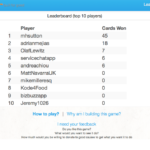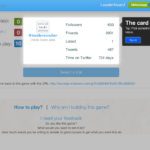
I have a tax bill due. It is ‘tax on profits’ and while I have the money set aside to pay it, there is still a deep sense of hesitation to hand the money over.
Hold up, here comes the science bit. Long ago humans became collectives to live and hunt together, socialise and defend themselves against their common threats. Living together brings its benefits and its own unique complications and so they evolved their communities norms or codes of conduct to address those complications. Laws and taboos emerged, carried in the carrier oil of the day – usually fear of some super powerful deity (or deities). Later these became commandments, religious law and in some communities – constitutions and legal code. Living together also came with additional cost. The cost in time, effort and materials to do the common things and to maintain them. As money evolved, these costs were rolled eventually up into a tax.
Money made things simpler, but it also made some things more complicated – it changed and changes the relationship people have with their community. It is important – in my view – that the people in a community contribute time and effort to the community work and not simply pay for it.
Fundamentally I am socialist. I deeply believe we are better together. I believe our collective should work for the good of all, especially the least able of us. This costs money – I get that. I’m not against funding our collective. I’m pro-fair taxes and anti-waste.
Basically I’m pissed off about taxes
My current beef with taxes is around a fundamental thing – how it is spent. Not just my taxes but all government revenue.
I deeply disagree with how my taxes are spent in the UK. I did with the previous Labour government and even more so with the current LibCon artists. I don’t want to fund wars dressed up as collective defense. I don’t want to fund insidious espionage on me and my compatriots in the name of the bogeyman. I want better outcomes for the poorest in my community – this takes money and care that money cannot buy. I want an efficient administration, not one in the clutches of greedy corporations that spend the pot I contribute to as though it were free.
Without choice, proportional taxation is malignant.
I don’t get to choose how my taxes are spent – I mean real choice – that is heard and acted on. That leads me to deeply resent proportional taxation – the idea those who have more, pay more. In theory, I am happy to pay more, if I have more. But the dysfunction on how those taxes are spent has turned that dream into a nightmare. The more I make, the more guns are bought, the more waste there is. The more spying there is. The more bankers are bailed out. The more money is diverted away from the things I want to see improve and the more money that is channeled to the things I definitely do not. The more of my taxes go to make the greedy rich, richer. This is not what I want.
So as I was in the shower contemplating handing over a not insignificant sum of corporation taxes I wondered how to pay for our shared interests without screwing over the people that pay it.
What if there was a flat subscription to be British (or American or any other nationality)?
You sign up, get a welcome pack and a token that gives access all the services that are available. Services are provided and maintained by the collective administration. It won’t be run for profit. Clearly sometimes we have to buy in things we are incapable of producing ourselves and that is rolled into the subscriptions.
This would, of course, be a no contract subscription model. You can cancel anytime. You might still access the same services, but at full cost or you might not access any at all. If there was a better provider of citizenship, you had the choice to sign up to them. If fact, you could sign up to as many as you could afford – but remember at any one time, you are probably going to just use one set of services, mostly.
Subscription
The subscription model is a little different from online apps. We can figure out what the basic subscription is and people can pay that. We can also figure out what it is worth and people can contribute their skills to realise that worth. For example, a doctor might choose to provide 200 hours of medical cover to a community clinic in exchange for their subscription. They might do it to pay the subscription for their child too. Streets need cleaning, gardens need tending, meals need serving and the lonely need company – all are aspects of collective needs that are overlooked.
What really helps this is understand what collective needs are to be met to keep our collective thriving. It is not only money that makes the world go round!
The essentials
Everyone gets the essential services – wellness (include healthcare and basic nutrition), collective security, transportation, access to essential infrastructure and maintenance. Education is also essential, although a little different from other things. Any citizen can access learning to any level they choose, with a payback option if they decide to take go become filthy rich instead of contributing their expertise back into the community!
But what of national resources? They belong to everyone, some generate revenue and that goes into the pot along with the subs. We pay out of the pot to maintain them and provide open access to everyone to things like parks and spas etc.
We never borrow money our revenue can’t cover. Scratch that, we never borrow. Period.
In the end this might mean we grow at a pace that is sustainable. If necessity is indeed the mother of invention, we would invent lots!
There is still a market
The non essential stuff is provided by the market (yes there is still one). Basically it is everything that is not considered essential. Education is another funny one. You might buy specialised education on the market (with money from the collective pot). That, like all education, is an investment.
Sometime the lines are blurry , especially with spending our collective pot on things in the market. The distinction here is that the essential stuff is run not-for-profit – by whoever delivers it. This distinction is protected by the most binding of oaths. There is absolutely no screwing with that. By anyone. We might add to the list of essentials but almost never remove from it and even then only by referendum.
Administration is essential. The popular perception is that it is waste – after all it does not contribute to the services nor to the pot. My view is that it is not waste, but it is one of the areas that could be really wasteful.
What of corporate taxes? Well participants in the market who are not citizens would pay a fee to participate in the market. How much they pay would be linked to their level of participation in the market. Not yet sure this is based on profit. Nonetheless, but they would be bound by our laws on how they operate within our market including labor practices and protections.
Entitlement
There is entitlement. If you pay your subs or you contribute it’s equivalent in community work, you are entitled to use the services. Simple.
There are exceptions, to the ‘pay/contribute and be entitled’ rule. For those who cannot pay and who cannot contribute in other ways , for example the severely disabled or chronically ill. Our collective will subsidise them. Clearly there is a limit to how much subsidy (how many can be subsidised and/or subsidy per person) but I am currently not sure how that would work. Though I suspect there are some services that do not cost more, the more people who use them and so in real terms, the subsidy may not be substantial. There are exceptions.
Children could be subscribed by their parents. There would be no automatic citizenship and you can change whenever you want. If you want choice, then it applies across the board.
Transparency, absolute transparency
For this to work, we need absolute transparency. Everything that needs doing is public so that the others in the collective can contribute. We already know what we all pay (the same rate subs). We’ll also need to know the the size of the pot – including other revenue that feeds it – it needs to be constantly accessible and perpetually accurate. We need to see and know every penny spent and to whom and for what. The actual cost of our administration is available to scrutiny by anyone. It is the accountability that transparency engenders that will help check the waste. Transparency does not come for free, it has to be paid for also – in money and in vigilance.
Transparency takes away some of issues we are currently stuck at. For example being transparent with entitlement means that the decision on identity cards – the usual form the token that provides access to services take – would be a no-brainer. If you access services, you need a token. This token, incidentally, is also your travel card. It shows you are a paid up member of that collective and can travel under its flag.
Pensions
One area of contention for me is pensions. With this model, your subs pay for what you use now. The current public pensions crisis , in my opinion, is borne out of the shortsightedness of its creators. Basically they started with noble intentions and then they found, almost immediately, it didn’t work. So they lied. They took money they were supposed to save for ‘future’ and used it to fund the now and took the ‘now’ money of taxpayers (in the future) to pay the pensioners whose money they had already spent. It is an elaborate ‘robbing Peter to pay Grandpa Paul’ scam.
So in this model , I do not consider pensions an essential service covered by subs. If you want one, you contribute separately and you buy one that suits your circumstances from the market. We can agree that you must have one, but where you get it from is up to you. To make things easy, we might collect it as part of subs, but it doesn’t go into the pot. It goes directly to the pension provider you bough it from. That way the mandatory aspect is enforced.
Clearly in the future you can use that revenue to continue to be a subscribed member of the collective.
Explore with me
This is an evolving idea. Though it might make you feel uneasy – ideas can do that – please help me explore it. As I wrote this, I thought we are pretty close in some aspects.
What might be the gaps and how might we close them. What would you consider to be our collective needs. Which are essential and which are not. Would you pay for a monarchy for example?
How might the administration be created without the drunkenness that power inspires? I’m open to ideas!
Are we better off remodeling our current system or starting from scratch?
What are your thoughts? I’d love to know and share.



























































